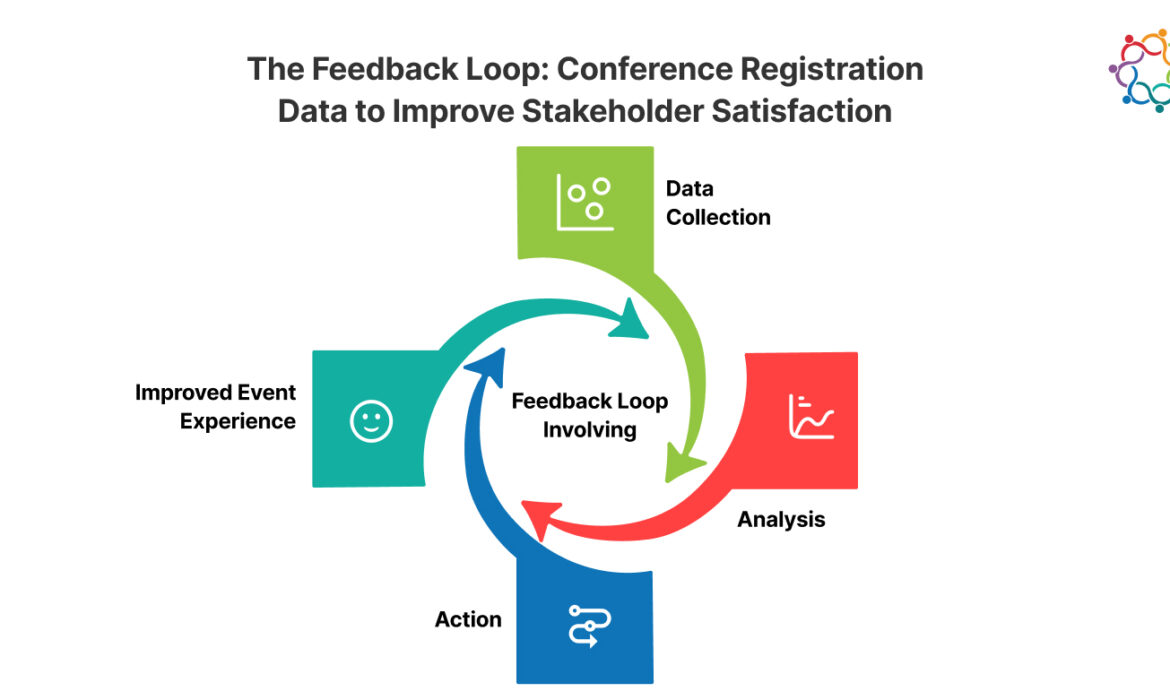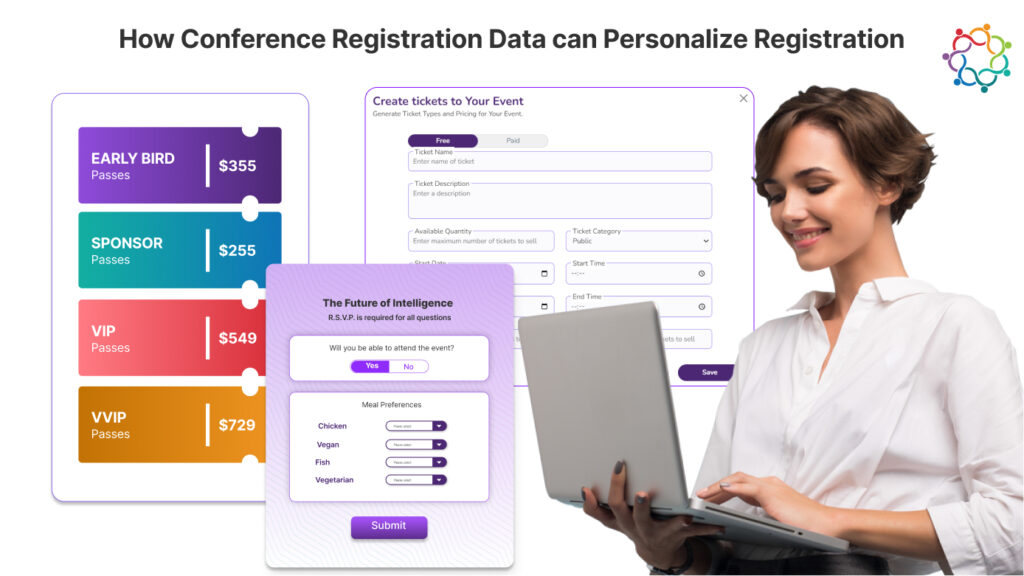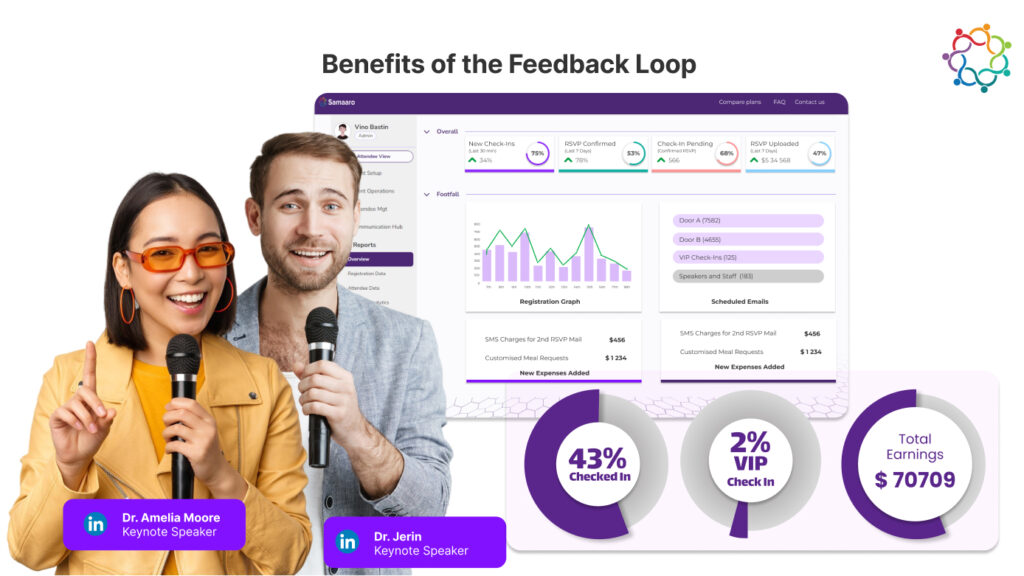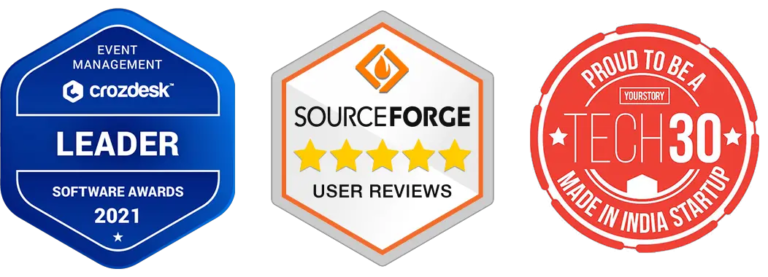Samaaro + Your CRM: Zero Integration Fee for Annual Sign-Ups Until 30 June, 2025
- 00Days
- 00Hrs
- 00Min

The success of any conference hinges on stakeholder satisfaction. This encompasses everyone involved – attendees, organizers, and sponsors alike. Each stakeholder plays a crucial role, and ensuring their needs are met is essential for a truly impactful event. But how do you measure that satisfaction? How do you know what resonates with attendees, what motivates sponsors, and what aspects of your event need improvement? Here’s where the power of conference registration data comes into play.
By harnessing the information captured during the registration process, you can unlock a continuous cycle of improvement – the feedback loop. This loop involves:
· Data Collection: Gathering essential information from the attendees during registration.
· Analysis: Transforming raw data into actionable insights.
· Action: Implementing changes based on insights to improve the event experience.
· Improved Event Experience: Leading to increased stakeholder satisfaction for future events.
This blog will explore the power of Samaaro’s event registration data and how you can leverage it to create a feedback loop that generates continuous improvement and ultimately, happier stakeholders.
The data captured during event registration is a treasure trove of information. Beyond simply gathering names and email addresses, the registration forms can collect valuable details such as:
· Demographic Information:
Age, location, job title, industry affiliation – understanding your audience demographics allows you to tailor communication and products to specific groups.
· Session Preferences:
By allowing the attendees to indicate their preferred sessions, you gain valuable insights into their interests and priorities.
· Dietary Restrictions:
Catering to dietary needs demonstrates inclusivity. The registration data allows you to plan accordingly and provide a more accommodating experience for the attendees with specific needs.
This data can be used to personalize the registration process itself. Here’s how:

· Conditional Logic in Registration Forms:
Take the example of a cascading event registration form where questions and options change based on previous responses. Someone selecting a VIP ticket will see different registration prices as compared to a general ticket.
· Pre-populated Forms:
Leverage existing data from past attendees or previous interactions. This saves time and improves accuracy while also conveying a sense of recognition.
· Targeted Communication:
Based on the event registration data, send pre-event emails highlighting sessions relevant to their preferences, offering personalized recommendations for networking opportunities, or providing logistical information specific to their location.
The power of event registration data extends far beyond the registration process itself. Insights gleaned from the data can be used to optimize various aspects of your event:
· Content & Speaker Selection:
Analyze the session preferences from registrations to understand the topics that resonate most with your audience. This data informs future content curation and speaker selection, ensuring you offer sessions that are relevant and engaging.
· Marketing & Promotion:
Target your marketing efforts based on the attendees’ demographics and interests gleaned from the event registration data. This ensures your message reaches the right audience, maximizing your marketing budget and attracting attendees aligned with your event goals.
Raw data alone holds limited power. To unlock its true potential, you need robust data analysis tools. Samaaro’s registration software seamlessly integrates with leading data analytics tools, allowing you to transform raw data into actionable insights. By analyzing trends, identifying patterns, and segmenting your audience, you can create a clear picture of your stakeholders’ needs and preferences.
The registration process provides a starting point, but it’s only part of the story. Post-event surveys are an essential tool for gathering additional stakeholder feedback. Surveys offer valuable insights into the overall event satisfaction, logistics and organizational effectiveness, and content and speaker popularity.

· Improved Stakeholder Satisfaction:
Understand and address the stakeholder needs to create a more positive experience for the attendees, optimize marketing campaigns to attract the right audience, and demonstrate value to the sponsors.
· Enhanced Event ROI:
By optimizing event elements based on the data, you maximize value and impact. This can mean attracting higher-caliber sponsors, achieving better attendee engagement, and ultimately, increasing the return on investment for your event.
· Informed Decision Making:
Move beyond guesswork and rely on concrete data to make strategic choices. This empowers you to curate compelling content, select impactful speakers, target your marketing efforts effectively, and optimize logistics – all leading to a conference experience that resonates with your stakeholders and sets the stage for future success.
The feedback loop, fueled by conference registration data and post-event surveys, provides a powerful mechanism for listening to your stakeholders – attendees and sponsors alike. So, the next time you plan a conference, remember – the power of listening resides within the data. Begin Samaaro’s free trial and embark on a journey of continuous improvement, leaving a lasting impression on all involved.

Samaaro is an all-in-one event technology company that offers a comprehensive suite of event management solutions to help event organisers streamline operations, boost attendee engagement and maximise ROI of their events.


© 2025 — Samaaro. All Rights Reserved.